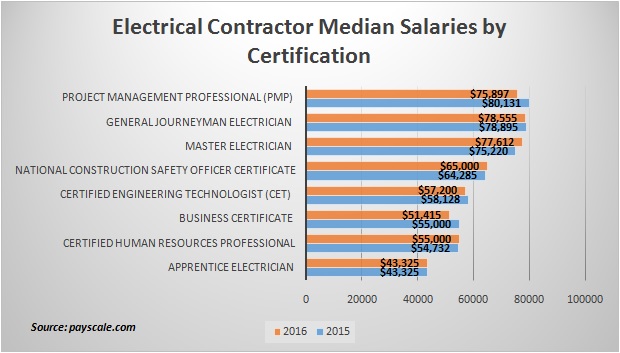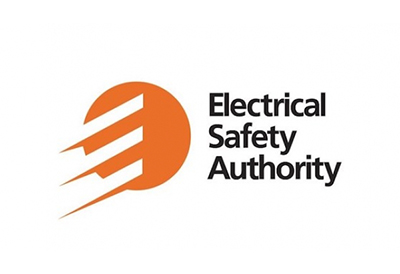CSA Z462 and Risk Assessment

August 11, 2020
By Terry Becker
The CSA Z462 Workplace electrical safety Standard, both the 2015 edition and the 2018 edition, require that a mandatory risk assessment procedure be completed for discrete energized electrical work tasks. This fact may not be known, or may be misinterpreted by the employer who is applying CSA Z462 as a basis of due diligence with respect to workplace health and safety regulations. During training, the information provided to supervisors and qualified electrical workers may not have covered the topic, described what the required risk assessment process is, or explained that the process shall be documented in order to comply with the mandatory CSA Z462, Clause 4.1.6.8 Risk Assessment Procedure.
Risk assessment is not hazard analysis. It is not enough just to identify that qualified electrical workers are exposed to shock and/or arc flash hazards and get them to wear PPE! You need to consider both the potential for injury or damage to health as well as the likelihood of occurrence. In reality, we want to prevent exposure before we protect.
So what are the important aspects of the risk assessment procedure that need to be communicated? First, the important definitions, then the procedure’s steps.
Important risk assessment definitions
In CSA Z462 the following definitions are provided related to risk:
- Risk — a combination of the likelihood of occurrence of injury or damage to health, and the potential severity of injury or damage to health that results from a hazard.
- Risk Assessment — an overall process that identifies hazards, and estimates the likelihood of occurrence of injury or damage to health that results from a hazard.
Note: As used in the CSA Z462 Standard, a “arc flash risk assessment” and a “shock risk assessment” are types of risk assessments, each dealing with a different hazard. The overall risk assessment procedure will require a work task’s arc flash risk assessment and shock risk assessment to be completed in order to determine additional protective measures to reduce risk.
These definitions apply when using the CSA Z462 Clause 4.1.6.8 Risk Assessment Procedure.
Risk assessment procedure steps
Three key steps are required:
1. Identify if the assigned discrete energized electrical work task(s) will expose the qualified electrical worker to shock and arc flash hazards. The work task may expose the worker to just one of them, or to both. Examples of discrete energized electrical work tasks are voltage measurement, current measurement, energized repair or alteration, racking in or out power circuit breakers, and installing temporary protective grounds. Remember: testing for the absence of voltage is energized electrical work!
2. Assess the inherent or initial risk level for the energized electrical work task. (Note that “inherent risk” or “initial risk” is the risk level present without assessing any additional risk control methods such as engineering controls, work procedures, PPE, etc.). Assessing inherent risk can be completed by using a defined electrical hazard risk assessment matrix and associated risk register table and (examples will be provided later). You will also be required to complete separate shock and arc flash risk assessments as components of the overall risk assessment process.
3. Implement risk controls according to the hierarchy of risk control methods to achieve a residual risk level that is as low as reasonably practicable (Note that “residual risk” is the risk level remaining after all of the required risk control methods are implemented, there is no zero risk). If the inherent risk level is High, then apply all available risk control methods to reduce the residual risk level to Low or Medium. In the field, it is critical that the Qualified Electrical Worker documents (on their Energized Electrical Job Safety Planning form) the risk control methods which must be applied to achieve the residual risk level of low or medium.
It is important to note that CSA Z462 Clause 4.1.6.8.3 in the 2018 edition places specific emphasis on human error and the impact it can have with respect to residual risk. Human error must be managed by the qualified electrical worker in real time in the field just before completing the assigned energized electrical work tasks.
It is also noted that the risk assessment procedure and its related process shall be documented in the employer’s electrical safety program.
How do I implement a risk assessment procedure?
I am often asked, “What is the Risk Assessment Procedure, and how do we implement it?” In the end, detailed information and a qualitative process were provided in Annex F of the 2015 edition of CSA Z462. This content was removed from the CSA Z462 2018 edition and a more simplified description was provided in Annex F (so don’t throw away your copies of the 2015 edition yet). Additionally, for a detailed review of generic risk assessment processes, you can also refer to the CSA Z1002 Standard, which is the basis for the content in CSA Z462 Annex F content.
Implementing a comprehensive and documented qualitative risk assessment process is not complicated. It is a simplified process that fulfils the CSA Z462 risk assessment procedure requirement. Yes, there is a subjective element, and this has to be acknowledged and managed when performing the risk assessment.
Some of the factors influencing the risk assessment outcome include:
- the experience of the people involved
- the quality, applicability, and interpretation of documented statistics, and/or history and experience with past incidents
- confirming you have qualified workers and they are competent for the work tasks being assessed
- ensuring human error and behaviours are managed
- reviewing your electrical equipment maintenance practices and understanding the condition of your equipment
- knowing how often your qualified electrical workers may be exposed
- ensuring that the qualified electrical worker is familiar with the specific electrical equipment to be worked on, and
- understanding what elements of the hierarchy of risk control methods are available to be applied to minimize the residual risk level
- ensuring that when arc flash and shock PPE, tools and equipment are required that they are available, compliant and testing current where testing is required (e.g. rubber insulating gloves)
Where do I begin?
It is a matter of documenting the process in your company’s electrical safety program, being trained on the process and working as a team to implement the process for individual discrete energized electrical work tasks. The CSA Z462 2018 Edition Table 2 gives us the starting point with a comprehensive list of energized electrical work tasks for AC and DC electrical equipment. Each individual work task can have a risk assessment completed for it proactively by an employer’s electrical safety committee (ESC). Meetings can be scheduled, minutes and action items created, and proactive committee-based risk assessments completed. The results of this process can then be provided to qualified electrical workers to apply in the field before they proceed to complete a discrete energized electrical work task. After the initial risk assessments are completed, the ESC can meet on an annual basis to review and revalidate the determined residual risk levels and take into consideration any changes.
As mentioned earlier, the individual shock risk assessments and arc flash risk assessments completed for each discrete work task are in fact individual risk assessments that are completed within the overall risk assessment process. For the specific energized electrical work task the applicable work task/hazard pairs are defined, and the individual shock risk assessment and/or arc flash risk assessment is completed for each work task/hazard pair. The highest residual risk level of all of the work task/hazard pairs related to completing a specific job is that job’s overall risk level. A defined risk assessment matrix and risk register table, as illustrated below in Figures 1 and 2, can be used to complete and document the overall risk level.
Figure 1 – Electrical Hazard Risk Assessment Matrix

Figure 2: Residual Risk Level Estimation Required Actions

Obviously, more detailed training and explanation is required than can be offered in this article. The intent is to open a dialogue, clarify what the CSA Z462 risk assessment procedure requires to be completed, and ensure you are aware.
I encourage you to ensure that you review and document the risk assessment process that you will be applying in your company’s electrical safety program. If you have a safety department, work with the HSE professional in your company. Ensure that you organize scheduled meetings and retain meeting minutes documenting the participants, the discussions that occurred, the proceedings of the risk assessment process, the decisions which were made, and the final results of the committee-based risk assessments. Supervisors can then work with qualified electrical workers to apply the documented policies and practices in their company’s electrical safety program, including documenting and implementing the required hierarchy of risk control methods to reduce risk.
Please submit any questions or comments you may have regarding this article to Terry Becker, P.Eng., CESCP, IEEE Senior Member via email at terry.becker@twbesc.ca.
Terry Becker, P.Eng., CESCP, IEEE Senior Member is the first past Vice-Chair of the CSA Z462 Workplace electrical safety Standard Technical Committee and currently a Voting Member and Working Group Leader for Clause 4.1 and the Annexes. Terry is also a Voting Member on the CSA Z463 Maintenance of electrical systems Standard and a Voting Member of the IEEE 1584 Guide for Performing Arc-Flash Hazard Calculations. Terry has presented at Conferences and Workshops on electrical safety in Canada, the USA, India, and Australia. Terry is a Professional Engineer in AB, BC, SK, MN and ON. Terry is an Electrical Safety Specialist, Management Consultant at TW Becker Electrical Safety Consulting Inc. and can be reached at 587-433-3777 or by email: terry.becker@twbesc.ca.










![Guide to the Canadian Electrical Code, Part 1[i], 26th Edition – A Road Map: Section 10 – Grounding and Bonding](https://electricalindustry.ca/wp-content/uploads/2022/11/Guide-CE-Code-2.png)





